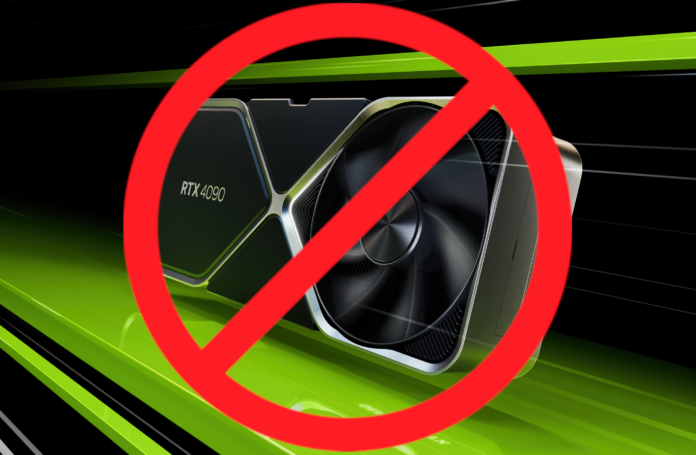In a back-and-forth between Nvidia and the US government, officials have once again changed rules on semiconductor exports to China. By reducing the Total Processing Power (TTP) allowed to ship to the country, GeForce RTX 4090D falls victim to new restrictions. Politicians haven’t explicitly stated that the limitations are aimed at any one GPU, but there aren’t many others that fit the bill.
Green Team created Nvidia GeForce RTX 4090D to comply with the previous iteration of these rules. It’s a little less powerful than the standard RTX 4090 since it has fewer CUDA cores and a lower TDP. The loophole comes in the form of overclocking, which offsets performance differences between the two. Generally, it’s a good product, but with these new changes, it’s no longer eligible to ship to China. Since 4090D was purpose-built for the country, it’s currently in limbo. Nvidia likely has a few of these knocking around that aren’t much good to anyone without a swift price cut.
These laws are in place because the US fears China is acquiring too much computer power. Tech legislation is often slow to pass regulatory bodies, but it is such a sensitive issue that timeliness is required. The latest fluctuation was something of an inevitability, but taking out Nvidia’s latest GPU three months after release must sting.
This change comes into effect on April 4, forcing Nvidia to change course. Nvidia hasn’t issued a statement on the move just yet, leaving us to speculate on what’s next. It’ll likely discontinue production of the GPU, and possibly shift RTX 4090D to sale in the West.
It’s not entirely a lost cause for RTX 4090D, however, as it’s pretty competant. 14,592 CUDA cores and a 425W TBP (typical board power) still puts it above RTX 4080. The 2.28GHz bast clock is even a little higher than the current RTX 4090’s 2.23GHz. So long as prices account for the supposed 10% dip in AI workload performance and 5% drop when gaming, RTX 4090D could have a home in the US. Eventually, I could see it joining Nvidia GeForce RTX 4090 on Amazon.
None of these efforts will quell the hunger for powerful graphics cards in China, which could ultimately see concerning workarounds. Hopefully we don’t end up getting more fake ones on the market.
